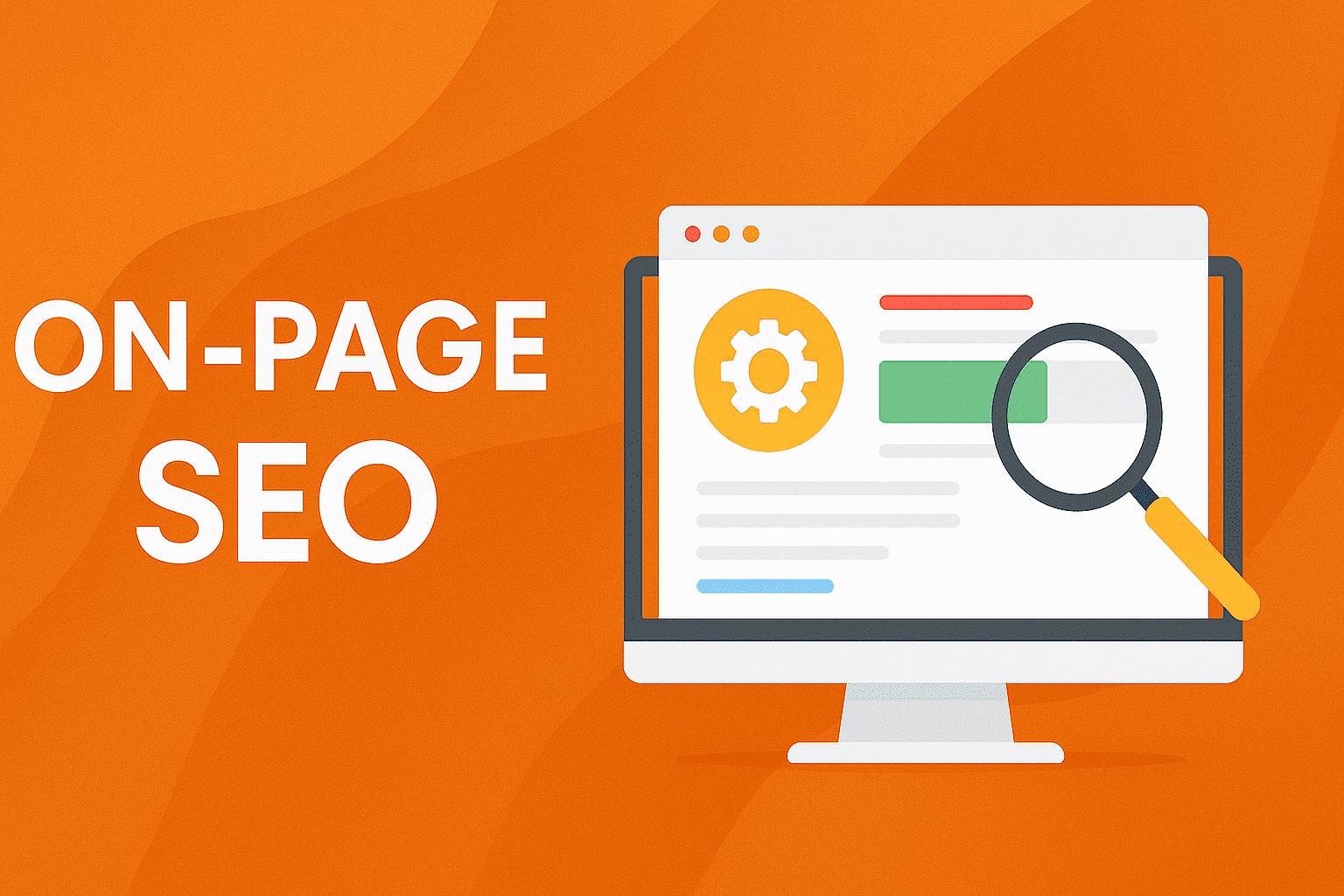What Is On-Page SEO?

On-Page SEO refers to all the techniques you apply directly on your website to help search engines understand your content and rank it higher in search results.
It’s the foundation of your SEO strategy — and it’s 100% under your control.
✅ Key Elements of On-Page SEO
1. Title Tag
– The clickable headline in search results
– Keep it under 60 characters
– Include your main keyword naturally
📝 Example: Best SEO Tools | YourBrand
2. Meta Description
– A short summary under the title in SERPs
– Keep it under 160 characters
– Use action words and your focus keyword
📝 Example: Explore the top SEO tools to boost rankings, traffic, and visibility in 2025.
3. URL Structure
– Clean, short, and keyword-rich
– Avoid unnecessary numbers or symbols
📝 Example: yourdomain.com/seo-tools-2025
4. Headings (H1–H6)
– Use only one H1 tag (the main title)
– Use H2, H3 for content structure and subtopics
– Include keywords where natural
5. Keyword Placement
– Use your main keyword in:
Title tag
H1 and H2 tags
First 100 words
Meta description
Image alt text
– Avoid keyword stuffing!
6. Content Quality
– Write for humans first, search engines second
– Answer search intent clearly
– Use bullet points, bold, internal links
– Aim for E-E-A-T (Experience, Expertise, Authoritativeness, Trustworthiness)
7. Internal Linking
– Link to related content on your own site
– Helps with crawling and distributes ranking power
📝 Example: Linking from blog post to service page
8. Image Optimization
– Use descriptive file names and alt text
– Compress images to reduce load time
– Use next/image if you're using Next.js
9. Mobile Responsiveness
– Ensure your page looks great on all devices
– Google uses mobile-first indexing
10. Page Speed
– Faster pages rank better
– Use tools like Google PageSpeed Insights
– Minimize CSS/JS, use lazy loading, and a fast host
11. Schema Markup (Structured Data)
– Use schema to tell Google what your content means
– Enables rich snippets like FAQs, articles, products
– Add via JSON-LD format